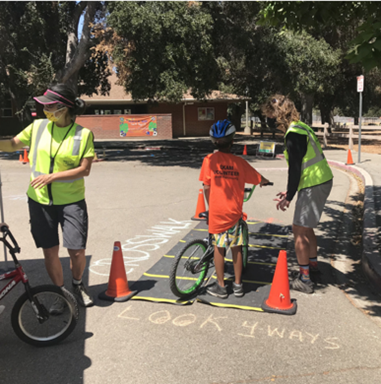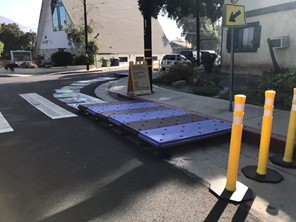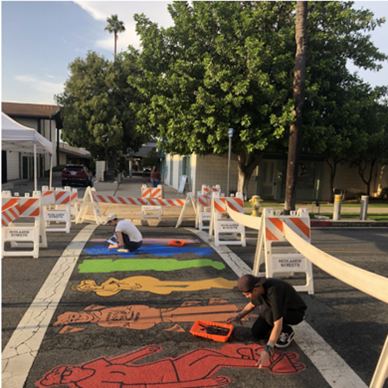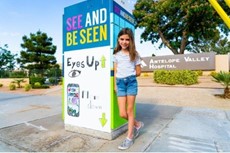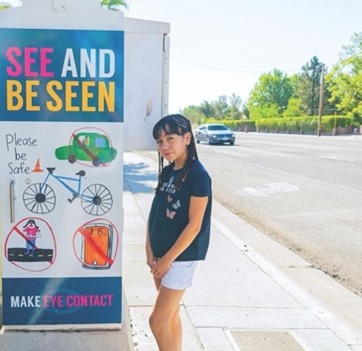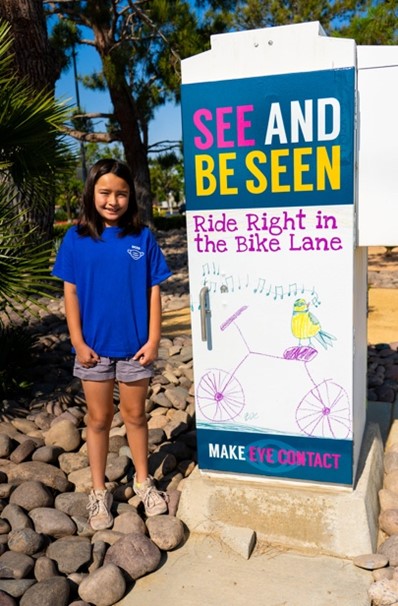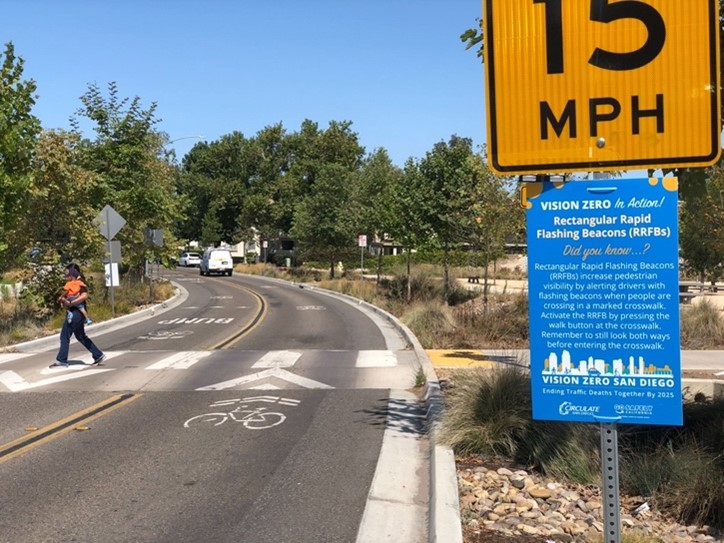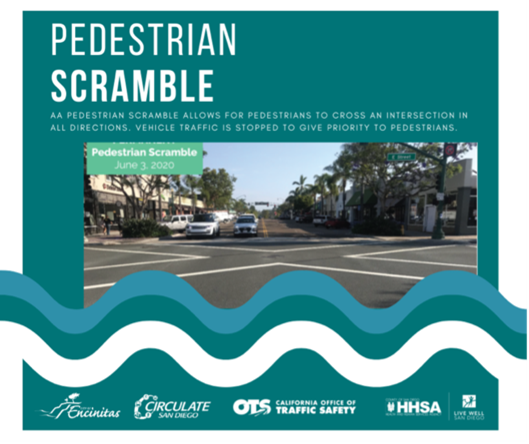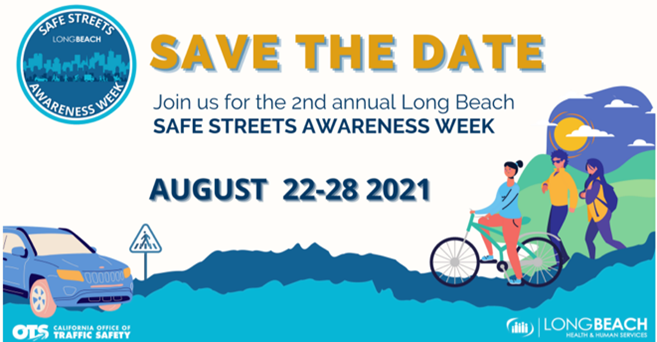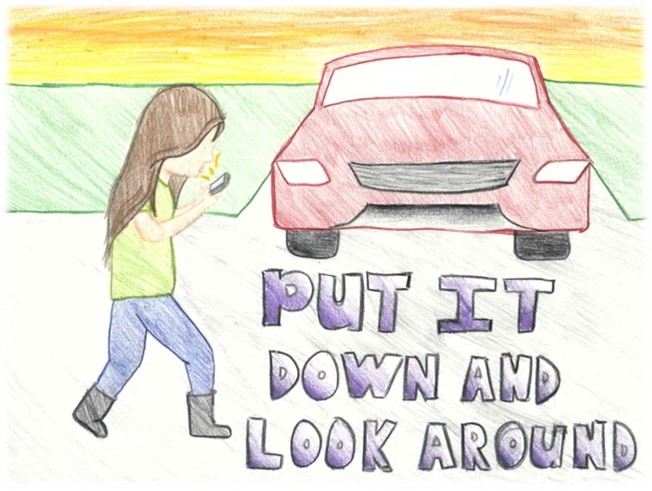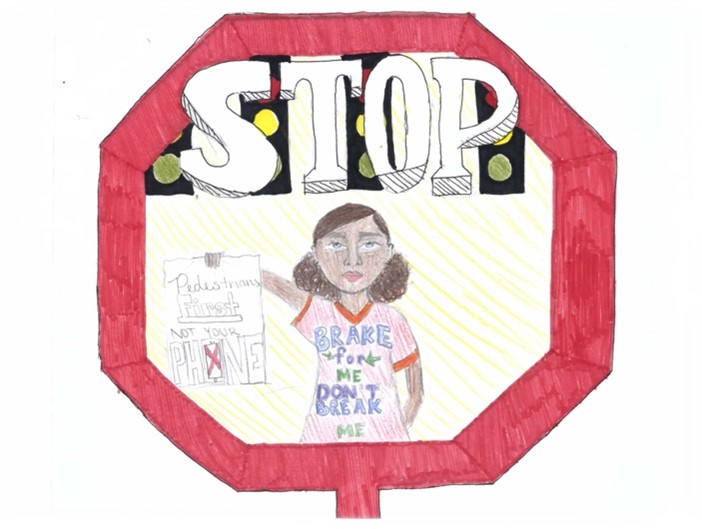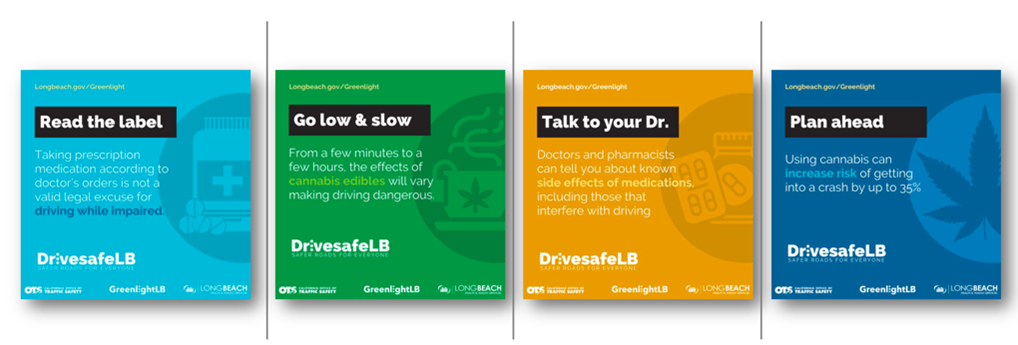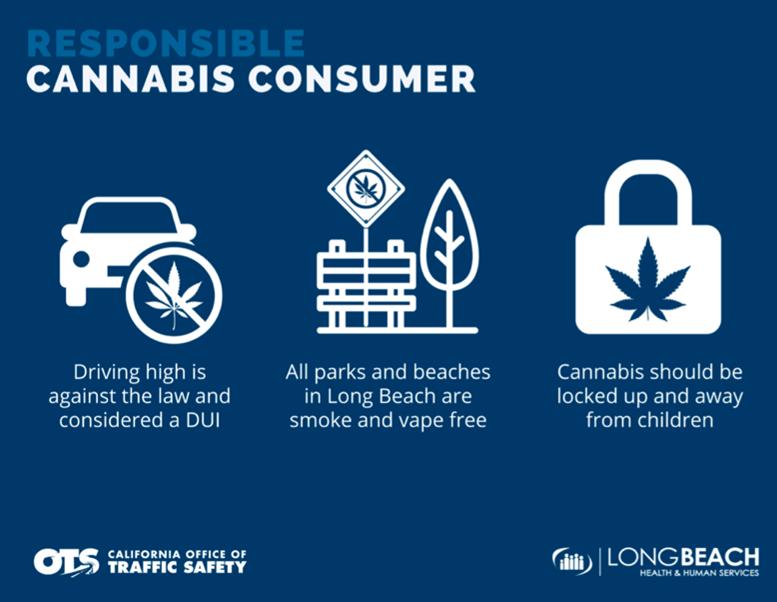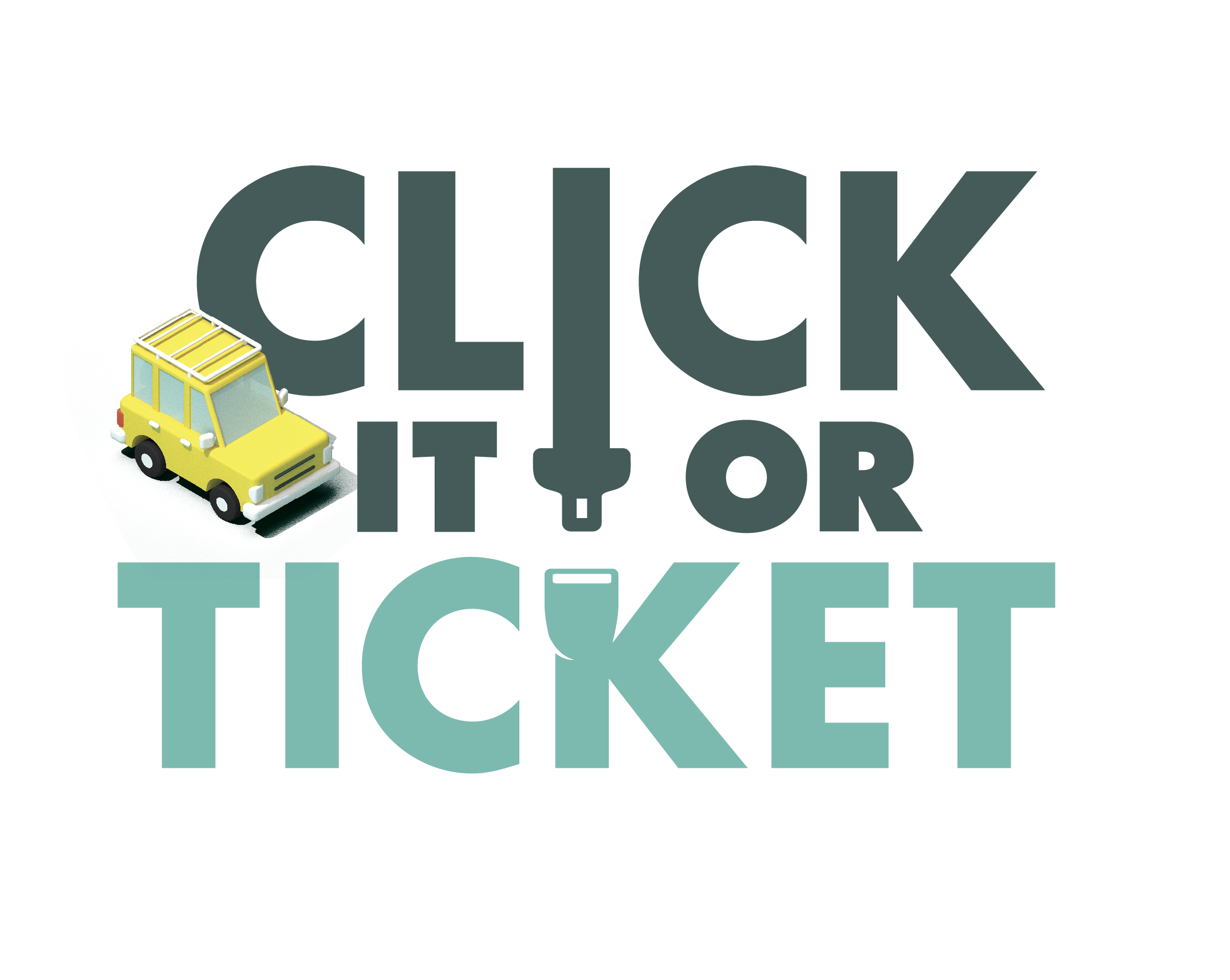2021 Grant
Program Highlights
Bicycle and Pedestrian Safety
Southern California Association of Governments (SCAG) “Go Human” Mini-Grants Program
SCAG awarded more than 30 community-oriented service projects to increase safety in historically disadvantaged areas most impacted by traffic deaths and injuries. Community groups identified unsafe intersections to collect data on the presence or lack of pedestrian safety infrastructure in high-crash areas and held infrastructure improvement demonstrations showing the benefits of curb extensions, separated bike lanes, pedestrian refuge islands and “parklets.”
University of California, Berkeley SafeTREC Complete Streets Safety Assessments and Community Bicycle and Pedestrian Safety Training Programs
UC Berkeley’s Safe Transportation Research and Education Center (SafeTREC) conducted 12 Complete Streets Safety Assessments (CSSA) throughout the state, with an increased emphasis on developing community action plans and evaluating safety improvements in historically underserved areas. Community groups put together action plans where safety measures were needed and were provided potential funding sources to complete plans. Communities that performed CSSAs included Indian Wells, Kerman, Jurupa Valley, and Richmond. The Community Pedestrian and Bicycle Safety Training (CPBST) program developed a new pilot, Comunidafes Activas y Seguras (Safe and Active Communities) that strived to improve walking safety in Spanish-speaking communities, including the use of Spanish podcasts and other Spanish-first forms of engagement and educational outreach.
City of Lancaster “See and Be Seen” Active Transportation and Healthy Living Program
The bicycle and pedestrian safety signal wrap campaign started in 2019 and has since expanded into a K-12 active transportation safety and healthy living education program, focused on behavior changes that will improve the safety of Lancaster’s residents, especially children and older adults. The city held a signal cabinet wrap art contest for K-12 students. Sixteen students had their artwork adapted and featured on signal cabinet wraps throughout the city.
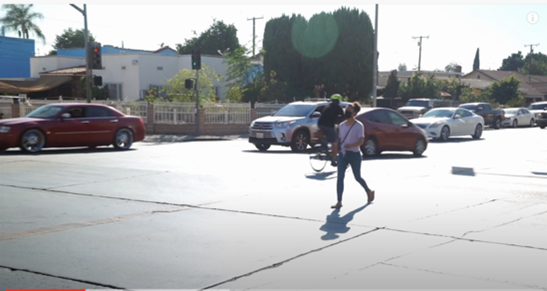
Los Angeles County Public Health Bicycle and Pedestrian Safety Video Series
The Los Angeles County Public Health Department partnered with the Los Angeles County Bicycle Coalition to produce a series of videos in English and Spanish on how to safely interact with people riding e-bikes, e-scooters, or walking.
San Diego Police Department, San Diego County Health and Human Services Agency Infrastructure Education Campaigns
Sixteen temporary educational signs were installed across San Diego highlighting Vision Zero infrastructure, including separated bike lanes, rectangular rapid flashing beacons and Pedestrian Hybrid Beacons (HAWKs). A social media campaign for the 2021 Virtual “Cyclovia” Encinitas event educated residents about existing infrastructure in the city of Encinitas that promotes safe biking and walking.
Long Beach Department of Health and Human Services “Look Out 4 Us” and Safe Streets Awareness Week Education Campaigns
The city of Long Beach launched their second annual Safe Streets Awareness Week to promote active transportation and educate the public on how to create safer streets. The city partnered with six community organizations and developed “Safe Streets Long Beach” educational kits. The city also revamped their “Look Out 4 Us” social media campaign focused on driver behavior around bicyclists and pedestrians.
Sacramento County Office of Education Bicycle and Pedestrian Safety Poster Contest
More than a dozen student-made posters were distributed to 10 school sites throughout Sacramento County as part of a contest to promote bicycle and pedestrian safety. The posters were also featured on the 2021-2022 school year calendar.
Alcohol and Drug-Impaired Driving
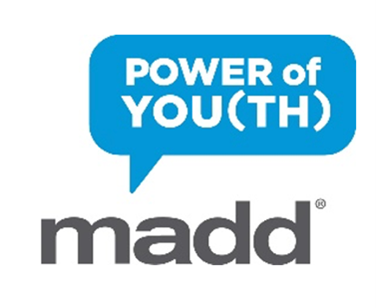
Mothers Against Drunk Driving (MADD) Teen Influencer Institute Program
MADD California hosted its first ever Teen Influencer Institute. The 5-week training program taught 10 middle and high school students how to become peer-to-peer educators. Graduates represent MADD on a local and national level as MADD Teen Influencers that educate their peers about the dangers of underage drinking. The “influencers” serve as the teen voice and perspective for underage drinking prevention throughout California. As part of their training, they committed to take a personal stand against drinking before age 21, riding with someone who is impaired, and to encourage their peers to do the same.

Alcoholic Beverage Control Launches Online Training Program for Licensees
ABC rolled out an online Licensee Education on Alcohol and Drugs (LEAD) training program for store managers and employees on how to sell alcohol safely, responsibly, and legally, with an emphasis on preventing sales to minors and clearly intoxicated customers. The ABC has trained more than 350,000 people since the LEAD program was created in 1991 through a grant with the OTS.
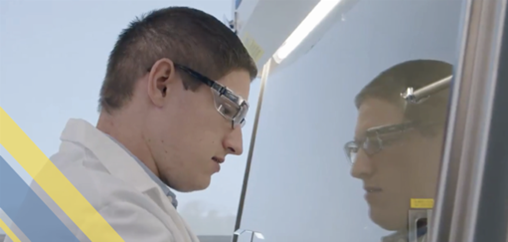
San Diego County Sheriff’s Department Toxicology Test Program
The pilot project is intended to help the department understand the prevalence of drugs in driving under the influence arrest cases, as well as get an idea of the impact of drug-impaired driving in the county of San Diego. The department’s toxicology lab tests about 25% of blood samples from DUI cases for 150 different types of drugs.
Long Beach Health and Human Services Greenlight LB Program
Long Beach partnered with 32 cannabis dispensaries to distribute 6,000 educational postcards for customers that promoted responsible cannabis use. The city also launched a month-long social media campaign about responsible cannabis and drug use and conducted an annual “Cannabis & Health Survey” to measure the knowledge, opinions and behaviors around cannabis and impaired driving. The survey was filled out by 416 people, with 92% of those surveyed who agreed that driving under the influence of cannabis is unsafe, up from 89% in 2020.
San Mateo County Superior Court Impaired Driving Treatment Program
San Mateo County Superior Court provided treatment services to more than 150 individuals with driving under the influence (DUI) convictions. The program had an 88% graduation rate and less than 2% of individuals in the program were arrested again for DUI.
Distracted Driving
Impact Teen Drivers “Create Real Impact” Contest, “Under Your Influence” Podcast Launch
Impact Teen Drivers (ITD) received more than 1,000 entries for the teacher-led social media campaign contest focused on reckless and distracted driving. One of the winners was a team at Modesto’s Johansen Middle School, who created “Survive the Drive,” a social media campaign raising awareness about the dangers of distracted driving. The contest included entries from individual students and teacher/adviser social media campaigns. ITD also partnered with the National Road Safety Foundation on a podcast featuring stories and helpful tips to empower parents and teens to practice safe behaviors on the road. Called “Under Your Influence,” topics included California’s provisional licensing law, speeding, and parental influence on driving behaviors.

Students Against Destructive Decisions (SADD) Education Program
SADD released a report on the status of impaired driving among college-age students. SADD joined the OTS and ABC on a virtual panel to discuss the release of the national report. The report found that alcohol and drug use on college campuses has increased in recent years. Most notably, there was a dramatic increase in 18-to-24-year-olds who admitted to consuming drugs, alcohol, or a combination of both before driving. The data from the report came from interviews with college students nationwide, which asked them about their perceptions of impaired driving. The report also found that students perceive the risk to drive impaired, especially drugged driving and marijuana use, to be low.
Motorcycle Safety

Expansion of “Ride to Live” Training Program
The hands-on training expanded to six local law enforcement agencies and works with riders to improve riding skills in different traffic scenarios. Started in 2015 by the Hawthorne Police Department, “Ride to Live” training programs were organized by Anaheim, Coronado, Hawthorne, Rialto and Upland Police Departments, as well as the San Francisco Municipal Transportation Agency (SFMTA). The Coronado Police Department hosted classes for military personnel at nearby bases, and Hawthorne Police incorporated first aid curriculum, using certified paramedics and registered nurses to teach riders how to apply first aid in emergency situations. The Riverside County Sheriff’s Office started their own “Ride to Live” program in federal fiscal year 2022.
Occupant Protection

Yolo County Health and Human Services Agency “Moving Billboard” Outreach
Yolo county encouraged residents to have their car seat checked with the use of bus advertisement. The bus route covered hundreds of miles throughout the county. During the 2021 grant year, Yolo County conducted 13 car seat check-up events and connected with more than 1,000 community members. The program checked 351 car seats through one-on-one appointments and check-up events.
Traffic Records

UC Berkeley SafeTREC Data Analysis, Technical Assistance, Education and Outreach “Vlogs”
SafeTREC produced a series of “vlogs” covering a variety of traffic safety topics, including the importance of understanding the people behind crash data, the connection between food security and safe transportation, and research conducted under the Collaborative Sciences Center for Road Safety (CSCRS) fellowship program.

Traffic Records Improvement Project Grant Program
The OTS awarded more than 50 grants to local law enforcement agencies throughout the state to create new, or enhance existing, traffic crash reporting systems, electronic citation equipment and software to submit crash data electronically. The new grants are intended to improve the timeliness of crash record collection and reporting.

